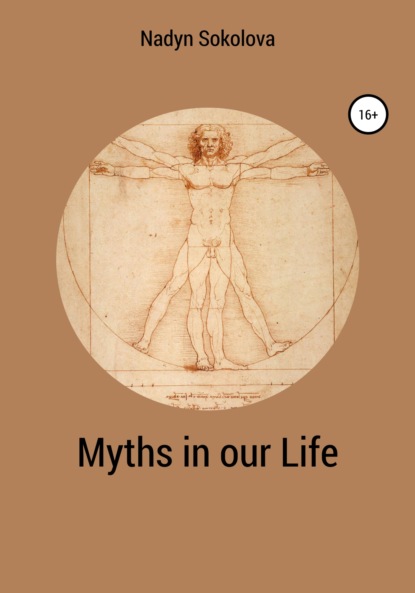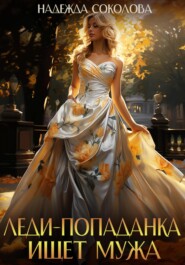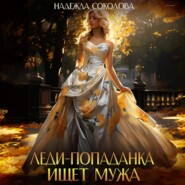По всем вопросам обращайтесь на: info@litportal.ru
(©) 2003-2024.
✖
Myths in our Life
Настройки чтения
Размер шрифта
Высота строк
Поля
Надежда Игоревна Соколова
People have always longed to perceive nature, have endevoured to explain for themselves world that surrounded them and to recognize their place in it. The primitive viewed everything as novelty. Trying to understand eternal principles, mankind began to create myths. This process has been continuing even till this day.
Introduction
As many scientist consider (Levis-Stross, Lihachev, Losev and others), the mankind from the very beginning has lived in the world of myths and legends. Resolute certitude in verity of the mythological stories accompanied the man during all his life, since birth till death. In pagan times everyone believed that his life belonged to the almighty gods, who could do with him everything they wanted. Instead of pagan gods in the christened countries appeared Christian God, and His existence again gave birth to the diversity of myths. In the modern world people in their majority ceased to trust something blindly. To believe in something they should find incontestable facts of existence of the object. An individual nowadays is characterized by strong criticism and deep-rooted habit to doubt in everything that can"t be conceived by empirical way. But even today the life of a modern man keeps myths, which primordially appeared in a faraway antiquity and took deep roots in the person"s unconscious, affecting his behavior, his evolution, and life in whole.
Actuality of the research. At present time cultural studies begin to understand the important role of the mythology in the life of society. It perceives that myths are not only the cradle of culture but that they live, develop and even are created in modern society . In the given research mythological reasons are traced in non-fictional interpretation of the biographies of the famous people. Detection of the elements of such myth-making helps to understand some tendencies in the development of the modern society.
The object of the research deals with the biographies of the famous people of the modern show business (J. Depp, Madonna, A. Pugachova) in their non-fictional impression.
Scientific originality of the research is concerned with the fact that it is made according to new facts matter, presented in cultural life, and viewed with the attitude of the crossed interests of two sciences: philology and culture.
The aim of the research is to show the existence of the three culturally-significant figurative stereotypes in the life of a modern Russian and American society with the help of the biographies of the show business stars.
This aim is realized in the solution of the following problems:
1) to define the mythologeme as the fact of language and culture, to show the interrelation of a myth and a mythologeme;
2) to detect the background and development of the chosen mythologemes;
3) to scrutinize the biographies of the famous people in the interpretation of which appeared these mythologems.
The material of the research consists of the precedental non-fictional texts, which interpret biographies of the stars in accordance with the recited above mythologems.
The problem of the research is the origin and development of the mythologems (culturally-significant stereotypes) in culture.
An individual, as a social being, has definite psychological prescriptions, such as: intention to success, leadership, wealth, etc. He, who has available fund of ambition, is possessed with these prescriptions and tries to realize them. Given prescriptions have most descriptive incarnation in the images of the heroes of the folk and literary fairy-tales. It is proved true by the opinions of many scientists (for instance, Z. Freud, K.G. Jung). These schemes of the human behavior ("mythologemes") can be conditionally called with the names of the heroes of the fairy-tales (Ugly Duckling, Cinderella, John-the-Fool). The images of the given heroes may be found both in the researches devoted to them by different scientists (V. Propp, A. Veselovsky and others), and in the biographies of the famous individuals (see par. 3.2, 3.3 of the given research). For instance, if Madonna is called Cinderella in the series of publications, it doesn"t mean that in her childhood she outlived something alike. It happened so because when she reached success her biography started to be actively and consciously mythologised. Putting her as an illustration the society wants to educate a great amount of another socially active individuals since these three schemes demonstrate the social activity (Cinderella longs to get to the dance, John-the-Fool has no distinctive aim but he commits serious deeds, Ugly Duckling meets with specific concern of society to him). The scheme of the mythologization is the only one but it is scrutinized in the three mythologemes, coming to us in the fairy-tale images. Our research shows the conscious cultivation of these myhtologemes. Myhtologemes exist, beginning to be cultivated by another way, and in particular, with the help of mass media.
Methodological background of the research consists of the scientific researches of the following authors: V. Anikin, C. Levi-Strauss, V. Propp, A. Veselovsky.
Theoretical significance of the research consists of the necessity of culturological development of conceptualization and mythology.
Practical significance of the research is defined by the possibility of using its material during reading the classes of culture and philology.
The methods of the research are the following: method of the philological description of the mythologemes, method of contrast and regimentation (typology), method of analysis and the following synthesis.
Key concepts of the research are: culture, myth, mythology.
The course of the research is the comparative culturology. The research regards the peculiarities of the modern culture of two countries: Russia and the USA.
The structure of the research. The bachelor research consists of introduction, in which aim and tasks of the research are shown, three chapters, revealing the particularity of the intercommunication of myth with different aspects of social culture and psychology of an individual existing in this society, conclusion where the results of the research are generalized, bibliography and appendix, in which the schemes sustaining the theoretical basis of the research are given.
Chapter 1. The concept of "myth" in scientific and cultural context
People have always longed to perceive nature, have endevoured to explain for themselves world that surrounded them and to recognize their place in it. The primitive viewed everything as novelty. Trying to understand eternal principles, mankind began to create myths. This process has been continuing even till this day.
1.1. Definition of the concept of "a myth" in scientific literature
The word "myth" inevitably evokes associations with antique sagas about gods and heroes. Herewith it is believed that a myth belongs to the past and is not available to exist in the present. To seize the essence of this conception we shall examine the statements about a myth given in the scientific literature. In the most general aspect myth is considered as "the way of the human being and attitude, entirely based on the notional linkage of a person and the world; the person perceives here psychological meanings by the way of the elementary features of the material, and regards and considers natural phenomena as animated creatures" [Cultural Study 2001: 100]. In this definition myth is viewed as psychologically-culturological category, determining relationship of the human conscience to the world that surrounds it, at that this relationship is characterized in myth with convergence vector up to complete identification. It is specified further that such a perception of the unity of oneself with the world, such a personification of reality is not confined by temporary framework by early cultural epochs, since myth is eternal: "for mythological mensuration assists in each culture and mythological images and experiences are rooted in unconscious elements of the human soul (compare Jung"s conception of archetyps – N. Sh.)" [Ibid.]. Therefore there is no surprise that myth is present even in modern reality, affecting the unconscious of individuals and aiding the mythologization of their conscience.
A.A. Potebnya considered that "the creation of myth can"t be characterized by any time. Myth consists of transference of individual characteristics of an image that should explain the fact itself" [Potebnya 1976: 263].
It should be mentioned that this scientist regarded myth from the psycholinguistic point of view. He presumed that "mythical world view is determined purely by psychical processes (fable-thought), mythology is created by linguistic factors" [Ibid., 267]. He specified: "The creation of a new myth consists of the creation of a new world, not in the oblivion of the preceding meaning" [Ibid., 266]. Potebnya"s opinion is important for us because his thought that the process of the world mythologization is connected with language, with word which reflects the fact of the humanization of nature, in particular, in the anthropological metaphors. Dalj in his "The Explanatory Dictionary" gave the following interpretation for the word "myth": "a fabulous, all-time, fabled event or person; an allegory acted out, that came into legends" [Dalj 1994, V. 3: 862]. Here is marked one more – folklore – form of myth"s fixing. Creative nature of myth, development of the verbal image in it and the main reason of myths" appearance, their role in development of game culture – everything this is examined in the research of J. Huizinga "Homo Ludens, or The Playing Man". This author considers myth to be "an imaginative materialization of entity…, elaborated more particularly than a single word. With the help of myth people try to explain earthly, placing the basis of human deeds in the sphere of divine… In myth great motive powers of cultural life begin: law and order, communication and enterprise, craft and art, poetry, scholarship, science" [Huizinga 1997: 24, 121]. Developing such interpretation of myth "Mythological Dictionary" concretizes and enumerates images, personified in myth: "Myths are the sagas of gods, spirits, heroes deified or connected with gods by their birth, ancestors, who functioned at the beginning of time and participated, directly or indirectly, in creation of the world, its element, both natural and cultural" [Mythological Dictionary 1990: 634].
In a brief definition of a dictionary of aesthetics myth, as special form of social conscience, is ascribed to the early phases of the human development. Myth is defined here as "specific for primitive conscience syncretic reflection of the reality in the form of perceptibly concrete personifications and animated beings, which think quite materially…, the product of verbal folk arts, collective folk imagination" [Aesthetics 1989: 206].
Analyzing extant approaches to the myth handling A.V. Vaschenko underlines its profound root-taking in human culture, from its appearance till the present: "Culture is expressed by myth more often than we think. Therefore it is almost impossible to designate territory of culture (and even of everyday life) existing out of myth"s influence. The comprehension of myth"s nature – in all sides of its notion – helps to understand modern conflict of culture and civilization to comprehend the communion of cultures, the place of language word"s artistry in the human society, to seize the role of a woman in culture and civilization, nature of many customs, etc." [Vaschenko 2000: 148]. Plurality of myth"s definitions in scientific literature ensues out of multiplicity, many sides and polyfunctionality of this phenomenon unique because of its complexity: "Myth appears as narration, ceremony, magic, chronotop (the basic national conception about time and space), rhythm, "archetyp", etc." [Ibid.].
If in a previous opinion about myth the accent was put on its generally cultural functions, in the proceedings of the remarkable Russian philosopher A.F. Losev actuality and personal substance of myth are underlined. Losev supposed that myth was "the reality that is utmost by its concrete nature, intense to the maximum and intensive in the supreme degree. This is utterly essential category of thought and life, distant of any contingency and outrage… It is not a fiction but it maintains the stringent and the most fixed structure and is logically, i.e. first of all dialectically, essential category of consciousness and being in general" [Losev 2001: 36 – 37]. This point of view is the most similar with the comprehension of myth that is considered in the given research where myth is regarded as the reality of special kind, i.e. close to the Losev"s definition: "Myth is life as itself. This is life for mythical subject, with all its expectancies and dreads, anticipations and hopes, with all its real workdays and fair personal interest. Myth is not an ideal being but it is vitally felt and created material reality, and physical till animation, validity" [Ibid., 40 – 41]. For a person with mythological thinking myth is "objectively, materially and sensually created reality being at the same time laid-back from the common process of facts and thus maintaining different levels of hierarchy, different levels of detachment" [Ibid., 61]. Losev considered that "myth is a personal being, or to be more exact, it is an image of personal being, individual form, face of personality" [Ibid., 97].
Вы ознакомились с фрагментом книги.
Приобретайте полный текст книги у нашего партнера:
Приобретайте полный текст книги у нашего партнера:

















